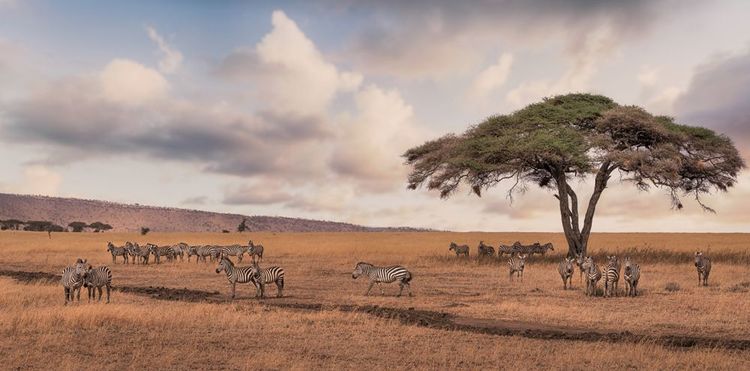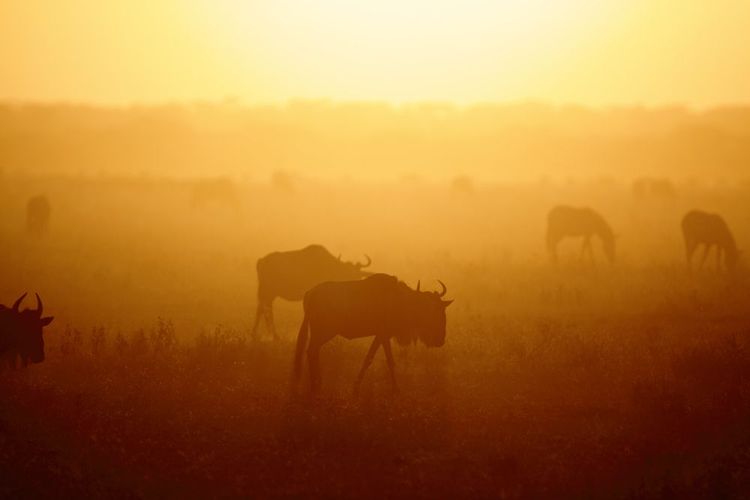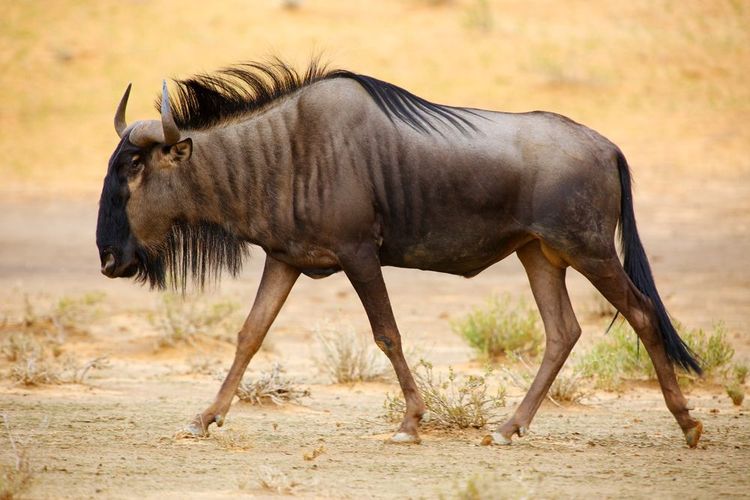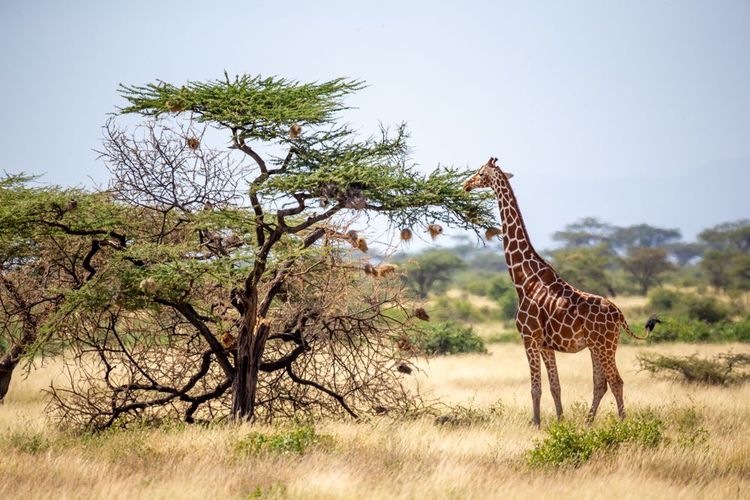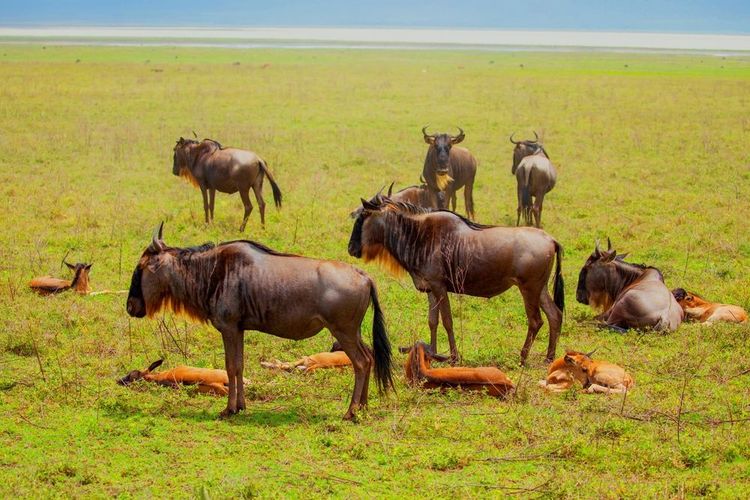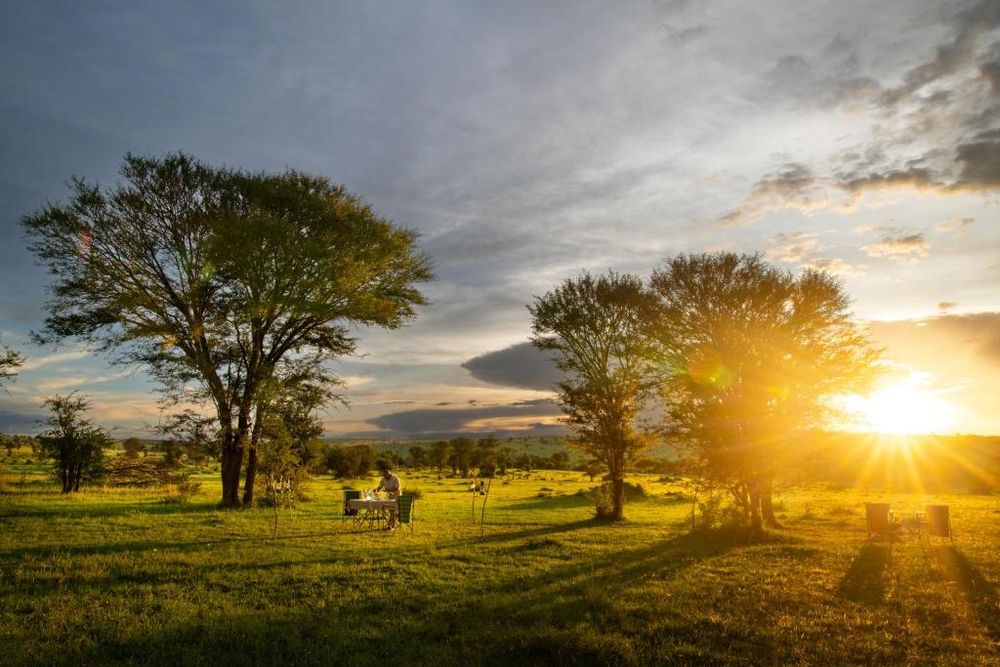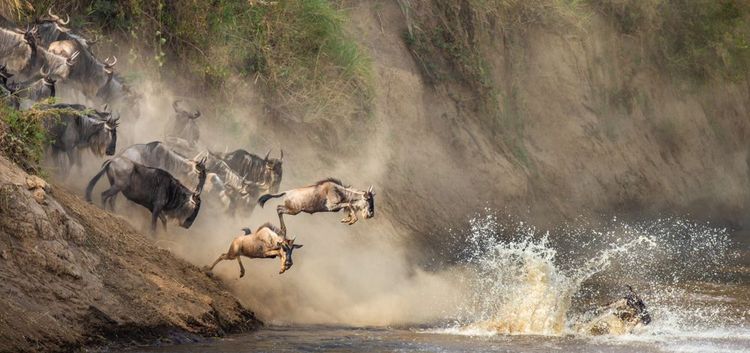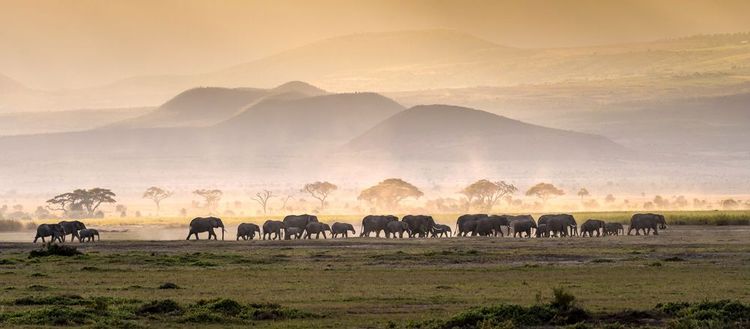A vast line appears on the horizon, wildebeest meandering in the distance. An Ariadne's thread that stretches as far as the eye can see, the herds are entering migration and can be more than 40 kilometres long. For thousands of years, the wildebeest have criss-crossed the Serengeti with the seasons in search of new pastures and fresh water to drink.
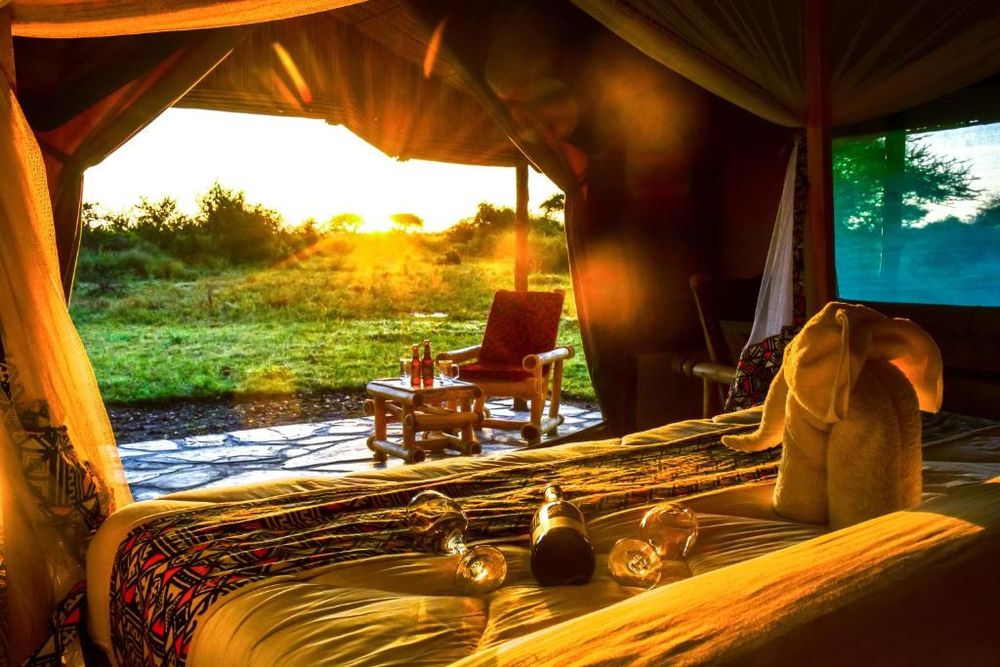 Serengeti
Serengeti
